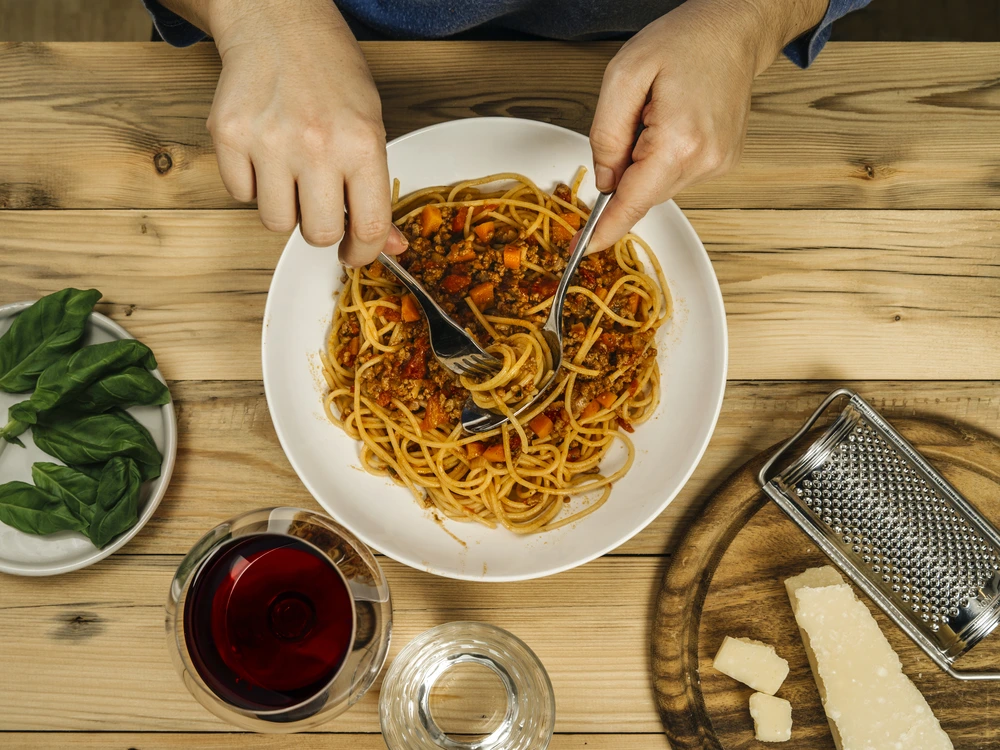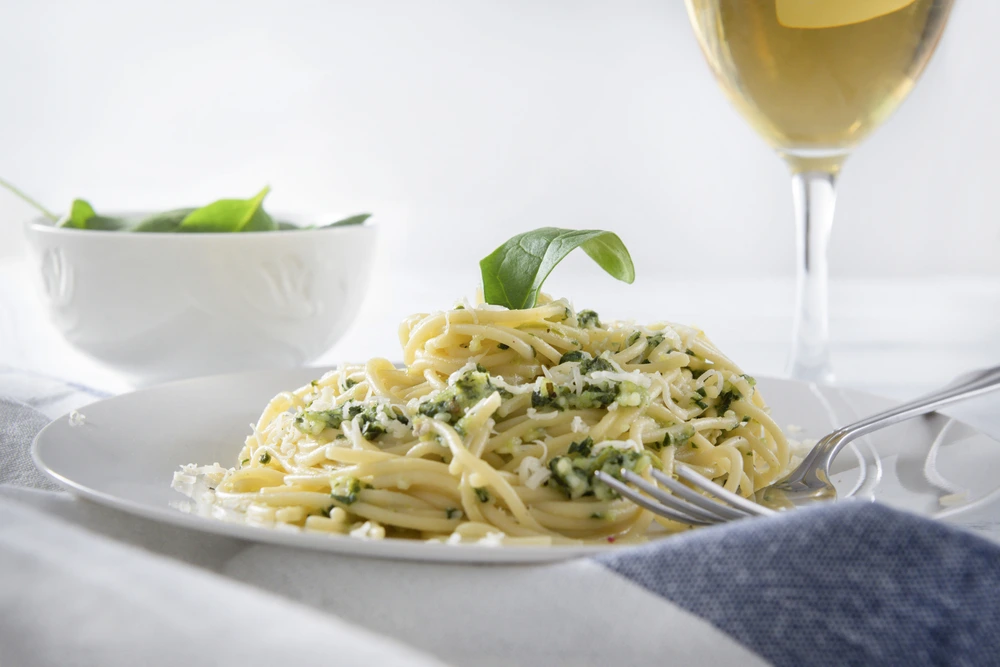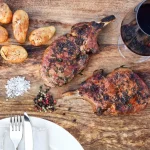Whether you twirl it in a spoon, cut it, twist it around your fork, or slurp it one strand at a time, there’s nothing like eating a hearty plate of spaghetti with a tall glass of vino.
But what is the best one to pair with your pasta? With over 200 kinds of wine, the possibilities can be, well, a lot to uncork. Lucky for you, we’ve put together some quick tips to make your pairing predicament a little easier.
Other Italian food pairings you may be interested in: Lasagna, pasta or pizza.

Consider The Sauce
Is it tomato-based or cheese-based, tossed with pesto, vegetables, or pulses (legume)? You want your wine to not only complement the flavor but enhance it, adding to the total tasting experience.
Some connoisseurs may suggest swirling wine in a glass to let it release its vapors, but the practice can also show the wine’s true colors, or its viscosity (alcohol content).
The longer it clings to the side of the glass, leaving “tears” or “legs” as it falls, the heavier it will feel as it rolls across your tongue. Generally, wines under 12.5% alcohol are considered light-bodied, 12.5% to 13.5% medium-bodied, and over 13.5% are full-bodied.
So what type of sauce with your spaghetti matches best with what type of viscosity?
For tomato-based sauces, full-bodied wines like Cabernet Sauvignon, Zinfandel, Grenache (Cannonau is the Sardinia variant which is appropriate for an Italian dish), or Merlot.
Or medium-bodied like Montepulciano d’Abruzzo, Sangiovese, Rosso di Montalcino, or Pinot Noir.
Finally, light-bodied like Gamay, Pinot Grigio, or Verdicchio are excellent pairings.
Cheese-based sauces pair well with light-bodied Reisling or Verdicchio. Medium-bodied Pinot Noir, Sangiovese, or Bianco di Custoza. Or full-bodied Pinot Bianco or Merlot.
Light-bodied wines like Verdicchio or Cortese di Gavi, medium-bodied Montepulciano d’Abruzzo or Sangiovese, or full-bodied Merlot are great compliments to pesto.
Whether it’s zucchini, mushrooms, onions, bell peppers, or fresh tomatoes, vegetables tossed with spaghetti typically pairs best with light-bodied Sauvignon Blanc or Arneis, medium-bodied Falanghina or Vermentino, and full-bodied Chardonnay.
Pulses (or more commonly known as beans, chickpeas, lentils, and dry peas) carry a big punch when it comes to nutrition.
When added to spaghetti, this protein-powerhouse is best paired with light-bodied whites or full-bodied reds in the Orvieto family (Italian wine region) or full-bodied whites like Vernaccia di San Gimignano.
Not All Meat is Created Equal
Although most spaghetti dishes lean toward meatballs, pretty much any poultry, red meat, fish, or “other white meat” can find a home on top of spaghetti, all covered with cheese … ahem, but we digress.
Just as there’s a long list of sauces and meats, the wine pairing can be just as diverse.
For red meat, typically full-bodied reds like Bordeaux, Rioja, Shiraz, or Cabernet Sauvignon are ideal choices.
With chicken, low viscosity, sweet or dry white wines such as Riesling, Sauvignon Blanc, or Pinot Gris partner best.
With a tendency toward a light, flaky texture, fish typically pairs well with whites like Soave, Vermentino, or Sparkling Wine.
If it’s robust seafood like swordfish, then full-bodied whites like Chardonnay, Pinot Gris, or Viognier taste best.
Pork can marry with a variety of wines, including Sauvignon Blanc, Gewurztraminer, Pinot Grigio, Merlot, and Chablis.
The Spice of Life … And Spaghetti

Along with the type of sauce and meat you choose to blend with your string-shaped pasta, the seasonings can also add another layer of flavor — and choices of wine pairings. Take a look at this tour of tastes:
Italian Seasoning:
If you lean toward the original, you’ll find spices like chili pepper flakes, black pepper, paprika, bay leaves, cumin, cayenne powder, oregano, and cloves. The blend of Mediterranean splendor pairs best with Barbera or Chiant.
Swedish Seasoning:
This variety uses a light amount of ingredients like kosher salt, black pepper, allspice, nutmeg, and garlic and onion powder in a creamy, gravy-like white sauce. It is best with Pinot Noir, Chardonnay, or Austrian Riesling.
Middle Eastern Seasoning:
Lamb or beef is mixed with cumin, allspice, cayenne pepper, and coriander leaves, then tossed with noodles (or eaten alone!). Its partner? Choose Grenache or Syrah.
Related: Is wine vinegar halal?
Vietnamese Seasoning:
Typically made with fish sauce, rice wine vinegar, and a hot chili blend, this Asian-spiced dish is best with Spanish Rueda or German Riesling.
Japanese Seasoning:
Typically made with ground chicken or pork, and mixed with a sweet, sticky, tangy sauce, this Pacific island version is complemented with Beaujolais or Pinot Noir.
It’s a Matter of Taste
No matter how many sources you research, gourmet magazines you read, or restaurant sommeliers (wine aficionados) you listen to for advice, there’s only one person who can tell you what pairs best with your spaghetti (or any dish): you.
However you pour it, the “right” wine is the one that pleases your palate, fits your budget, and can be easily found. Buon appetito!
- Shrimp Cocktail (and More) Wine Pairing Guide - 09/06/2022
- What Wine Serving Sizes Look Like: Standard Size and More - 08/06/2022
- How Much Sugar is in Wine: Glass and Bottle Sugar Content - 08/06/2022






